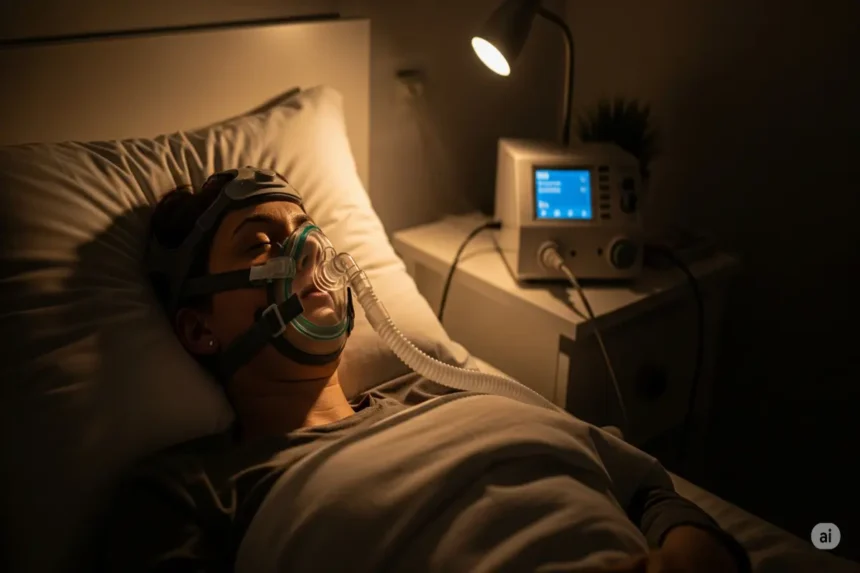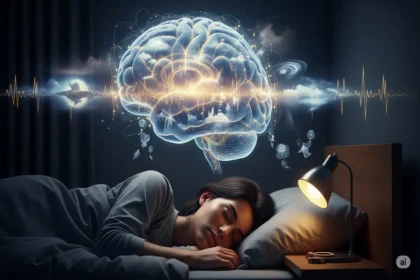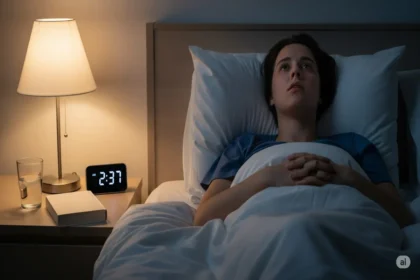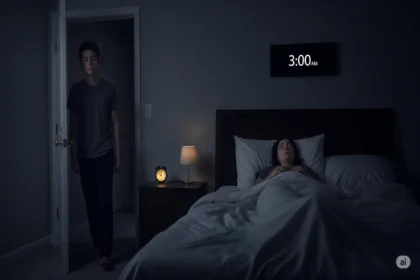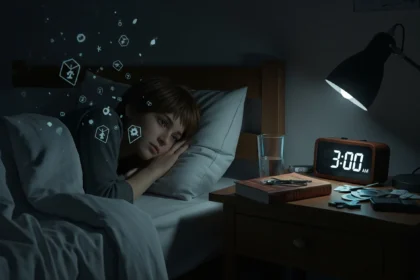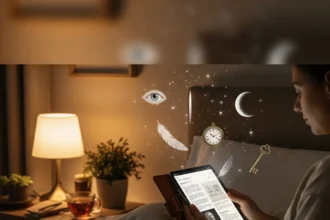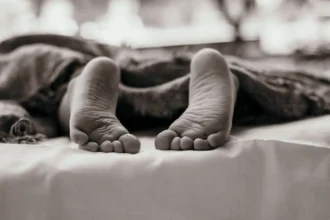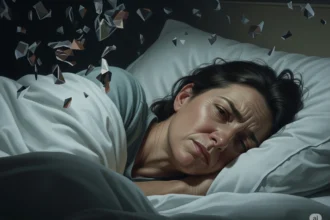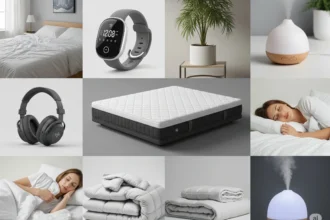The quiet of the night is often seen as a sanctuary, a time for profound rest and rejuvenation. Yet, for millions around the globe, this peace is shattered by a hidden struggle: Sleep Apnea. This serious sleep disorder, characterized by repeated pauses in breathing during sleep, is far more than just loud snoring. It’s a silent suffocation, a nocturnal battle for air that fragments sleep, starves the body of oxygen, and, if left untreated, can lead to a devastating cascade of health problems, profoundly impacting quality of life and even longevity. Understanding its subtle symptoms and the array of effective treatment options is crucial for reclaiming restful nights and safeguarding long-term health.
Consider David, a seemingly healthy, middle-aged executive. His wife had complained for years about his thunderous snoring, punctuated by alarming gasps and silences. David, however, always woke feeling exhausted, battling a persistent brain fog, morning headaches, and an inexplicable irritability. He’d nod off during meetings, struggle to focus on spreadsheets, and even found himself fighting sleep at the wheel. He attributed it to long work hours and stress. It wasn’t until his wife, concerned by the alarming pauses in his breathing, insisted he see a doctor that he received a diagnosis: severe Obstructive Sleep Apnea. David’s story is a common one, illustrating how easily the insidious signs of sleep apnea can be dismissed as mere fatigue, masking a condition that silently erodes health and jeopardizes safety.
What is Sleep Apnea? The Mechanics of a Disrupted Breath
At its core, sleep apnea means “cessation of breath” during sleep. It occurs when the muscles that keep the airway open during wakefulness relax too much during sleep, leading to a partial or complete blockage of airflow. These breathing pauses, called “apneas,” can last from a few seconds to more than a minute and can occur dozens, even hundreds, of times per night. Each apnea causes a drop in blood oxygen levels and triggers a brief arousal from sleep (often so brief the person doesn’t remember it), forcing the brain to signal the body to resume breathing. This constant cycle of suffocation and arousal prevents the individual from entering or maintaining the deep, restorative stages of sleep.
There are primarily two types of sleep apnea:
1. Obstructive Sleep Apnea (OSA): The Most Common Form
OSA is by far the most prevalent type, accounting for about 85-90% of all sleep apnea cases. It occurs when the soft tissues in the back of the throat (like the soft palate, uvula, tonsils, and tongue) relax and collapse, physically blocking the airway. It’s often associated with:
- Anatomical factors: A naturally narrow airway, enlarged tonsils/adenoids, a large tongue, or a small jaw.
- Obesity: Excess weight, particularly around the neck, adds pressure to the airway.
- Age: As we age, muscle tone naturally decreases.
- Alcohol and Sedatives: These relax throat muscles, exacerbating the condition.
- Nasal Congestion: Blocked nasal passages can force mouth breathing, making collapse more likely.
2. Central Sleep Apnea (CSA): A Brain-Driven Issue
CSA is less common and occurs when the brain fails to send proper signals to the muscles that control breathing. There is no physical obstruction; the brain simply “forgets” to tell the body to breathe. CSA is often associated with underlying medical conditions, such as heart failure, stroke, or certain neurological disorders, or with the use of opioid medications.
Decoding the Night: Key Symptoms of Sleep Apnea
Many individuals with sleep apnea are unaware they have the condition, as the most telling symptoms occur during sleep. It’s often a bed partner who first notices the alarming signs.
Nocturnal Symptoms (Often Reported by a Bed Partner):
- Loud, Chronic Snoring: This is the most common and often the first noticeable symptom. The snoring is typically very loud, disruptive, and consistent.
- Observed Breathing Pauses: The bed partner may notice periods of silence (apneas) where the person stops breathing, followed by a loud gasp, snort, or choke as breathing resumes. This is the most definitive sign.
- Gasping or Choking Sounds: The sound of the person struggling to breathe or gasping for air as they briefly awaken from an apnea.
- Restless Sleep: Frequent tossing and turning, or unusual sleep positions.
Daytime Symptoms (Experienced by the Individual):
- Excessive Daytime Sleepiness (EDS): This is the hallmark symptom. Despite spending seemingly enough hours in bed, individuals feel overwhelmingly tired, sleepy, and may fall asleep unintentionally during the day (e.g., in meetings, while driving, watching TV). This is not just fatigue; it’s an irresistible urge to sleep.
- Morning Headaches: Often dull and throbbing, these can be caused by decreased oxygen and increased carbon dioxide levels during sleep.
- Dry Mouth or Sore Throat: Resulting from mouth breathing during sleep.
- Irritability and Mood Changes: Chronic sleep deprivation severely impacts emotional regulation, leading to increased irritability, mood swings, anxiety, and even symptoms of depression.
- Cognitive Impairment: Brain fog, difficulty concentrating, memory problems, slower reaction times, and impaired decision-making.
- Reduced Libido: Sleep apnea can affect hormone levels, leading to decreased sex drive.
- Frequent Nighttime Urination (Nocturia): The body’s stress response to apneas can increase urine production.
If you or your partner notice these symptoms, especially loud snoring combined with observed breathing pauses and daytime sleepiness, it’s crucial to seek medical advice.
The Grave Consequences: Why Untreated Sleep Apnea is Dangerous
Sleep apnea is far more than an inconvenience; it’s a serious medical condition with profound long-term health implications. The repeated drops in blood oxygen (hypoxia) and the constant stress on the cardiovascular system during apneas take a heavy toll.
- Cardiovascular Disease: Untreated OSA significantly increases the risk of:
- High Blood Pressure (Hypertension): The body’s stress response to apneas elevates blood pressure during sleep, and this often carries over into waking hours.
- Heart Attack and Stroke: Chronic hypertension, coupled with inflammation and stress on the heart, increases the risk of these life-threatening events.
- Irregular Heartbeats (Arrhythmias): OSA can trigger or worsen conditions like atrial fibrillation.
- Heart Failure: The heart works harder to pump blood against elevated pressure, potentially leading to heart failure.
- Type 2 Diabetes: Sleep apnea can lead to insulin resistance, making it harder for the body to regulate blood sugar levels, significantly increasing the risk of developing or worsening Type 2 Diabetes.
- Weight Gain and Obesity: There’s a bidirectional relationship. Obesity is a major risk factor for OSA, but OSA itself can disrupt hormones that regulate appetite (ghrelin and leptin), making weight loss more difficult and contributing to further weight gain.
- Accidents: The excessive daytime sleepiness caused by OSA significantly increases the risk of drowsy driving accidents and workplace errors. Studies show that individuals with untreated OSA are at a much higher risk of motor vehicle accidents.
- Mental Health Issues: Chronic sleep deprivation and the physical toll of OSA contribute to depression, anxiety, and reduced quality of life.
- Surgical Complications: Individuals with undiagnosed OSA face higher risks of complications during surgery, particularly related to anesthesia and airway management.
The Diagnostic Journey: Unmasking the Hidden Problem
Diagnosing sleep apnea requires a professional evaluation by a sleep specialist. The process typically involves:
- Medical History and Physical Exam: Your doctor will ask about your symptoms, sleep habits, medical history, and may examine your throat, mouth, and neck.
- Sleep Diary: You might be asked to keep a record of your sleep patterns and daytime symptoms for a week or two.
- Polysomnography (PSG): This is the gold standard for diagnosing sleep apnea. It’s an overnight sleep study conducted in a sleep lab. During the PSG, sensors monitor:
- Brain waves (EEG) to identify sleep stages and arousals.
- Eye movements (EOG) and muscle activity (EMG).
- Heart rate (ECG).
- Breathing patterns (airflow, respiratory effort).
- Blood oxygen levels (oximetry).
- Leg movements.The data collected allows the sleep specialist to determine the presence, type, and severity of sleep apnea (measured by the Apnea-Hypopnea Index, or AHI – the number of apneas and hypopneas per hour of sleep).
- Home Sleep Apnea Testing (HSAT): For individuals with a high probability of OSA and no other complex medical conditions, a portable monitoring device can be used at home. This measures breathing, oxygen levels, and sometimes heart rate, providing a simpler way to screen for OSA.
Treatment Options: Reclaiming Rest and Health
The good news is that sleep apnea is a highly treatable condition. The choice of treatment depends on the type and severity of the apnea, as well as individual preferences and underlying health conditions.
1. Continuous Positive Airway Pressure (CPAP): The Gold Standard
For moderate to severe OSA, CPAP therapy is the most common and highly effective treatment.
- How it works: A machine delivers a continuous stream of air through a mask worn over the nose or nose and mouth during sleep. This positive air pressure acts like a pneumatic splint, keeping the airway open and preventing collapses.
- Benefits: CPAP eliminates apneas, stops snoring, restores oxygen levels, and allows for restorative sleep. This significantly reduces daytime sleepiness and the associated health risks.
- Challenges: Adherence can be an issue, as some find the mask uncomfortable or the machine noisy. However, modern CPAP machines are quieter, and a variety of mask types are available to improve comfort. Consistent use is key to its effectiveness.
2. Oral Appliances: A Dental Solution
Custom-made by a qualified dentist, these devices are worn in the mouth during sleep.
- How it works: Oral appliances (Mandibular Advancement Devices or MADs) gently push the lower jaw and/or tongue forward, keeping the airway open.
- Benefits: They are a good option for mild to moderate OSA or for individuals who cannot tolerate CPAP. They are discreet and portable.
- Challenges: May cause jaw discomfort or changes in bite over time. Requires regular dental follow-ups.
3. Lifestyle Modifications: Foundational Support
These are often the first line of defense for mild OSA or as complementary strategies for all types:
- Weight Loss: Even a modest reduction in weight can significantly improve or resolve OSA, particularly for those who are overweight or obese, by reducing tissue around the airway.
- Positional Therapy: Sleeping on your side can prevent gravity from collapsing the airway. Special pillows or devices that prevent back sleeping can be helpful.
- Avoid Alcohol and Sedatives: These substances relax throat muscles, making snoring and apneas worse. Avoid them, especially in the hours before bedtime.
- Nasal Decongestants/Strips: Addressing nasal congestion from allergies or colds can improve nasal airflow.
- Quit Smoking: Smoking irritates the airway and contributes to inflammation, worsening OSA.
4. Surgical Interventions: When Other Options Fail
Various surgical procedures can address anatomical issues contributing to OSA, though they are generally considered after CPAP and oral appliances have been tried.
- Uvulopalatopharyngoplasty (UPPP): Removes excess tissue from the soft palate and uvula.
- Genioglossus Advancement: Moves the tongue muscle forward.
- Maxillomandibular Advancement (MMA): A more extensive surgery that moves the upper and lower jaws forward.
- Newer, Less Invasive Procedures: Include radiofrequency ablation (to shrink tissue) or pillar implants (to stiffen the soft palate).
- Hypoglossal Nerve Stimulation: A surgically implanted device that stimulates the hypoglossal nerve, which controls tongue movement, to keep the airway open during sleep. This is a newer option for specific patients who can’t tolerate CPAP.
5. For Central Sleep Apnea (CSA):
Treatment for CSA often focuses on managing the underlying medical condition (e.g., heart failure). Adaptive Servo-Ventilation (ASV) devices, which provide variable air pressure, are often used.
Conclusion: Breathing Easy, Living Fully
Sleep apnea is a silent thief, stealing not just restful nights, but vitality, health, and even years from those it affects. Its symptoms, often dismissed as mere tiredness or loud snoring, are critical warning signs of a condition that can lead to severe cardiovascular, metabolic, and neurological consequences.
However, the journey from diagnosis to effective treatment offers profound relief and a renewed lease on life. By understanding the subtle cues of sleep apnea, seeking professional evaluation, and embracing the tailored solutions available – from the transformative power of CPAP to lifestyle changes and, if necessary, surgical interventions – individuals can reclaim the quiet, restorative sleep their bodies desperately need. It’s an investment not just in quieter nights, but in a healthier heart, a sharper mind, and a more energetic, engaged life. Don’t let sleep apnea steal another moment of your precious rest; breathe easy, and live fully.
Disclaimer: The information provided in this article is for general informational purposes only and does not constitute medical advice. It is not a substitute for professional medical advice, diagnosis, or treatment. Always seek the advice of your physician or other qualified health provider with any questions you may have regarding a medical condition. Never disregard professional medical advice or delay in seeking it because of something you have read on this website.

